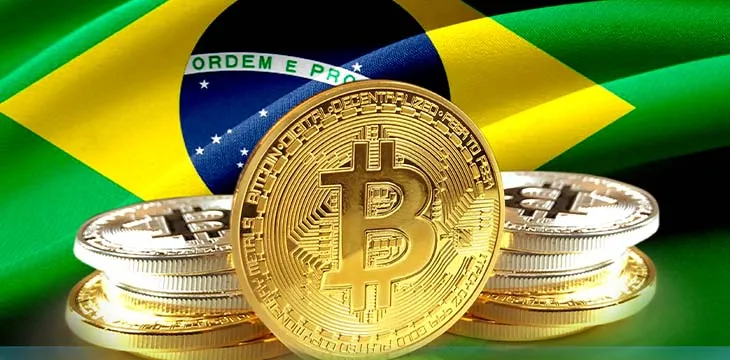|
Getting your Trinity Audio player ready...
|
One of the Brazilian central bank’s initial forays into a digital real has garnered relative success after being demonstrated on a public blockchain.
Local publication Valor Economico says that the experiment was conducted by digital currency exchange Mercado Bitcoin and Stellar protocol designed to promote low-cost and real-time settlement for users. The pilot paid special attention to the simulated delivery versus payment (DvP) transactions for the simultaneous exchange of funds and assets.
“Our thesis was to prove that it is possible, viable and safe to carry out transactions with digital assets using a representation of the real on public networks,” Fulvio Xavier, head of special projects at the Mercado Bitcoin, said. “The Central Bank is always concerned about understanding what happens when transactions leave its hands.”
The latest study revealed that merging a tokenized version of the Brazilian payment system with decentralized finance (DeFi) was possible, with Stellar going ahead to stratify access to certain features. Brazil’s central bank has been mulling over using a permissioned private blockchain for its central bank digital currency (CBDC), but the recent study shows that a public blockchain could still offer security, privacy, and a range of other benefits.
“Stellar becomes almost a ‘proxy’ for the regulator to test the current digital real controls on an open platform,” Roberto Durscki, head of partnerships at Stellar, remarked. “In practice, it allows piloting a relatively complex and successful use case with access to DeFi applications.”
The results from the study will ultimately assist the Brazilian central bank in its quest to launch a digital real to complement physical currencies. One key takeaway from the study was the ease of onboarding individuals with zero experience with Web3 platforms or digital wallets and its conformity with existing regulations.
CBDC launch is only a few months away
Plans for a full-scale CBDC launch are slowly gathering steam, with the central bank targeting 2024 as a tentative date. Central bank governor Roberto Campos Neto confirmed the plans at the tail end of 2021, saying it will improve financial inclusion.
“Greater inclusion, lower cost, intermediation, competition with reduced barriers to entry, efficiency in risk control, monetization of data, complete tokenization of financial assets and contracts,” Neto disclosed in a conference hosted by Poder360 news outlet.
Several financial institutions and tech firms have indicated an interest in collaborating with the banking regulator to conduct CBDC experiments. Visa, Aave, Banco Santander Brazil, ConsenSys, and Microsoft (NASDAQ: MSFT) were selected to explore different functionalities for the digital real, including SME financing, rural financing, and DvP for digital currencies.
To learn more about central bank digital currencies and some of the design decisions that need to be considered when creating and launching it, read nChain’s CBDC playbook.
Watch: CBDCs and BSV

 07-04-2025
07-04-2025 





